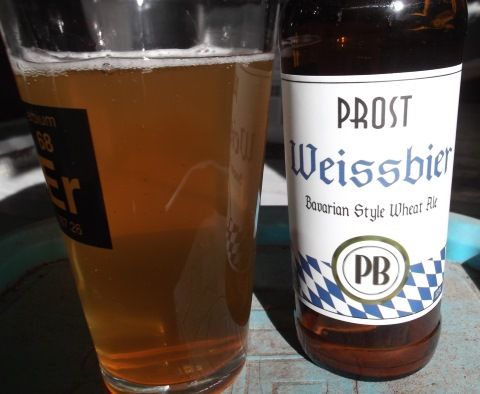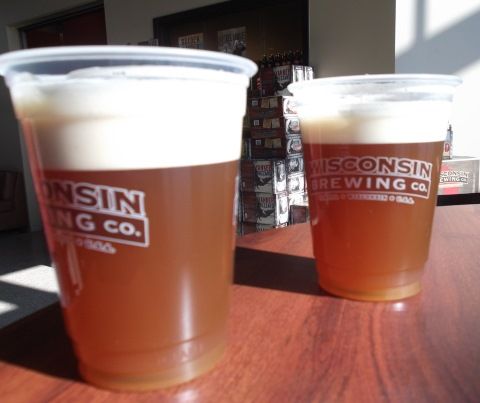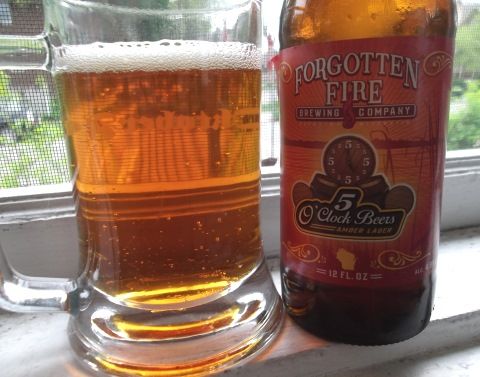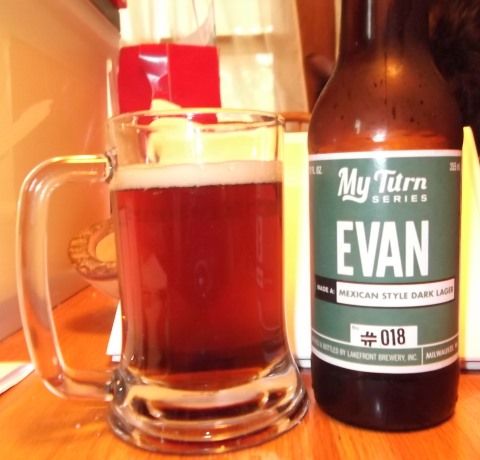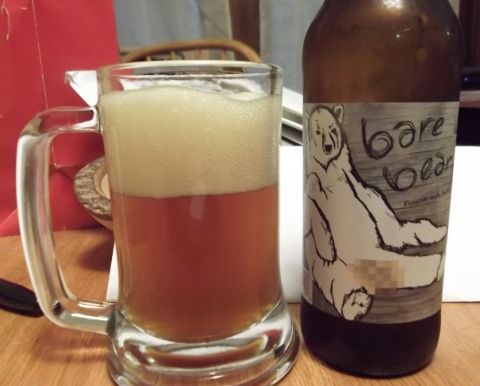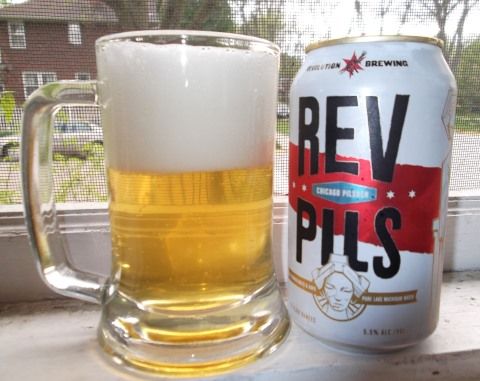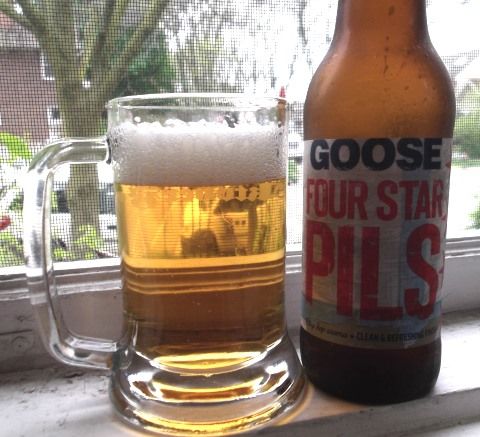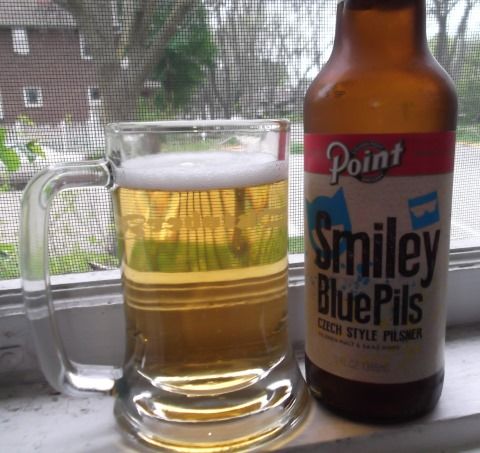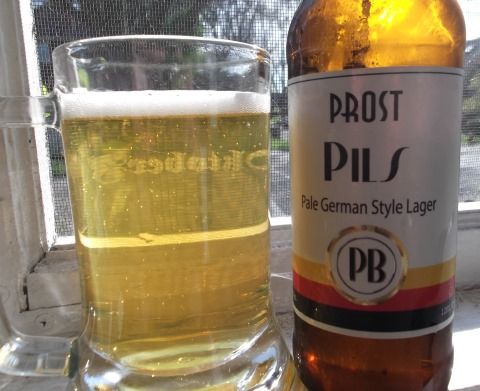
It was a drab, rainy evening last Friday as a coterie of Madison's craft beer industry/scene gathered at the American Family
Dream Bank for a panel discussion entitled "Craft Beer Time Machine". Ready and willing to dispense their wisdom and do a little prognostication were Chris and Colleen Welch, proprietors of
Trixie's Liquor and its shiny new sibling,
Growlers to Go-Go; the Wisconsin State Journal's Chris Drosner, a.k.a. – the
Beer Baron; Peter Gentry, owner of and brewer at Madison's
One Barrel Brewing; and Otto Dilba, co-owner of
Ale Asylum where he does the marketing chores, if memory serves, and is the de facto public face of the brewery.
The discussion's theme was "Where will Madison's craft beer scene be in 10 years?" Chris Welch served as moderator although he added his 2¢ as well on many an occasion. Herr Welch began the evening by asking the panel what they were drinking 10 years ago. Dilba responded that he was busy creating the business plan for Ale Asylum. Frau Welch injected the first of many notes of levity into the proceedings by replying that she was using her fake ID to gain entrance into the Angelic, a now-defunct brewpub a couple of whose employees, including Dilba, would go on to found Ale Asylum.
This led into a short story time in which Herr Welch told the cautionary tale of Pete's Wicked, a very popular brand in early years of microbrewing and its slow decline. And this tale acted as a prelude to much of the discussion which followed.
The craft beer bubble, whether real or imagined, was oft mentioned that evening and essentially the main topic of the evening. Frau Welch opined that the bubble was still growing and not at its peak ready to burst. There were still a lot of consumers out there to reach, she reasoned. However, she admonished that the days of opening a microbrewery in your garage like Lake Louie's Tom Porter did are over. She also noted that, while there's a lot of competition out there, it hasn't become dog-eat-dog. Yet. "Who will stay relevant?" she asked. Relevant to whom or what she did not say.
Without missing a beat her husband chimed in by talking of a shakeout in the industry and offered the venerable
Sprecher as an example of a brewery at risk. He described them as sclerotic with 70% of their sales being soda. "Why doesn't anyone want my German-style lager?" he mocked. He continued by offering that Sprecher makes an IPA, which he deemed sub-par, only because they have to. I was confused by this because I am rather under the impression that there are quite a few brewers in this same situation. It seems like Welch was romanticizing the brewing industry by implying that only brewers who live and breathe IPAs can brew a good one.
Dilba analogized that, just as you eat boloney sandwiches when you are young and then opt for higher quality deli meats when you are older and have the money to buy them, so too it goes with beer. You get a taste for quality. The Beer Baron chimed in in agreement stating that money is certainly a limiting factor. Dilba went on to state flatly, "I don't think craft has a bubble." For his part, Peter Gentry agreed with Dilba. If craft had a peak, it was a ways off. He did think that price competition was going to become more pronounced.
I was happy that Herr Drosner chimed in here and alluded to the price of craft beer. It is, after all, a luxury food item. You can buy a good deal more macro lager for your buck than microbrew. This exchange also had me thinking about craft beer in Wisconsin generally as opposed to Madison specifically. How much of Wisconsin's craft sales are in the southern – and more urban - part of the state? Valkyrie Brewing up in Dallas says that Madison and Milwaukee make up
80% of their sales. Black Husky up in Pembine (and on their way to Milwaukee) say that Milwaukee alone is responsible for
80% of their sales.
As rural Wisconsin
loses population and the state's middle class
shrinks, Madison and Milwaukee become even more important to microbrewers around the state. (Although I'd bet Green Bay is bringing up the rear.) Obviously there's more to it than this. If you're in the northwest part of the state, you've got the Twin Cities. And there's always Chicago. Can a new brewery make it without Madison and/or Milwaukee?
This segued into discussion about beer name/label trademark disputes. Apparently Madison's Next Door Brewing and New Glarus both have a beer called "Bubbler" and there looks to be a showdown a-comin'. I wondered to myself if Kohler was going to step in somehow or if they even had any legal basis to do so. Dilba related the trademark dispute that Ale Asylum had with Short's Brewing 6-7 years ago when the Michigan brewery took issue with AA's Hopalicious claiming it was easily confused with their Huma Lupa Licious. Gentry remarked that the fellowship of the craft brewing community was dissipating and that "big boy business" stuff was coming. The Beer Baron pointed to the Lagunitas vs. Sierra Nevada feud over the latter's Hop Hunter label.
With the trademark dispute section of the night over, the panel came back to the craft bubble. Herr Welch said that he'd spoken to the CEO of Frank Beer Distributors and he' quipped that there is no craft beer bubble. There will be a shakedown that involves breweries closing, however. Welch added that some breweries should close and it was hard not to recall his comments about Sprecher here.
The panel was in general agreement about the craft bubble. They were all of the mind that either it didn't exist or that the market was nowhere near it. There were, after all, plenty of macro drinkers and people turning 21 to bring into the craft fold. While it is certainly true that the audience for microbrews is quite large, there is a limited amount of shelf space and a finite number of tap handles. Presumably all those Bud and Miller handles aren't going to be converted to craft overnight nor are all those 30 packs of macro light lager going to relinquish their spots on shelves in one fell swoop so it would seem that some microbrews are going to push others out.
And I wonder what the panel would have said about pay to play…
A woman in the audience originally hailing from St. Louis asked if Wisconsin beer drinkers were more critical of craft beer because of the strong beer culture here. The Beer Baron answered in the affirmative citing the comments of various out of state brewmasters who felt a need to really have their stuff together before entering the Wisconsin market. Frau Welch opined that there is a lot of Wisconsin drinking pride.
I managed to slip a question into the proceedings. Having sat next to Dilba at the hearings for the "brewpub bill" back
in 2007, I was curious to know what laws there are on the books that craft brewers would like to have rescinded/what laws would they like to see enacted. Both Dilba and Gentry went off on fine diatribes. Dilba warned against Miller and beer distributors as if they were the Empire in
Star Wars with Darth Vader at the helm. He didn't cite any specific legislation but warned that, when the distributors try to get legislation enacted that benefits them, public outcry is needed to counteract their lobbying efforts. If
my own experience is anything to go by, legislators sorely need to be educated.
The unfortunate tale of Like Minds Brewing being encouraged to open in Chicago instead of Milwaukee by the state due to Wisconsin law prefaced Gentry relating his own
tale of woe wherein he had to give up selling wine and spirits in order to expand his business by having his beer contract brewed by someone else.
Towards the end of the evening the panel was asked to ask one another questions and do a little prognostication. There was general agreement that more craft breweries were going to be bought out by large corporations. Herr Welch related that Dan and Deb Carey of New Glarus were planning their retirement and were looking to turn the brewery over to the employees in 10-15 years. Gentry talked about expanding One Barrel but having a desire to be smart about it instead of just rushing into it. Dibla made some comments about Ale Asylum expansion and that it's taken 10 years for their beers to be available statewide and in the Chicago area as well. This prompted Herr Welch to note that there is another area brewery that brews about the same amount as Ale Asylum but is distributed in more states and has been around much longer. I presumed he was talking about Capital but they brew a fair amount more than Ale Asylum so I'm not sure to whom he was referring. Perhaps it was Capital and he just got his numbers confused.
Dilba asked Frau Welch about how they decide which beers get cooler space. She said that they give preference to Wisconsin beers and then to "5 star" beers from out of state. It was nice to hear that they reserve some space for self-distributed breweries which explains why Lazy Monk can be found at Trixie's.
Gentry said that he hopes to move into a new brewhouse in 2019 and predicted that there will be 8,000 craft brewers within 10 years with most of them being small brewpubs. Frau Welch thought that there will be a large increase in the number of women in the microbrew industry in 10 years. Women will make up 30-40% of the people in craft, up from 10% today. Also, cans will prevail in retail over bottles.
The last word was given to Dilba who said he felt Madison had a lot of potential and could accommodate three times the number of breweries it has now. He ended the evening by predicting that, although they've only used water, yeast, malt, hops in Ale Asylum's first 10 years, they will brew a non-
Reinheitsgebot complaint beer within the next 10.
All in all it was a very interesting conversation. Although it featured just a small selection of people from the industry, it was impossible not to come away from the discussion feeling that all of Madison is bullish on the future of good beer.
The Welches did a fine job of making me feel like a pilgarlic for my predilection for German-style lagers instead of "relevant" IPAs. No wonder I don't feel welcome at Trixie's where they and others there immediately brag to me about fresh shipments of Pseudo Sue and Zombie Dust. When I tell them I don't particularly care for IPAs and instead ask about irrelevant lagers, I can see from their faces that I have just taken the wind out of their sails. I'll pass on the Citra circle jerk, thanks. I can't help but think that
Metropolitan will be withdrawing from Madison, if not Wisconsin, soon.
I'm no good whatsoever at making predictions but I'll offer a few observations.
Having recently bought a house, I would not be surprised at all if the next wave of brewpubs in Madison open not downtown/isthmus/campus but in Eken Park and Eastmorland. Young couples who can't afford to buy a house on the isthmus or the Schenk-Atwood area are moving to these neighborhoods.
Tangentially, I believe that someone will determine once and for all why brewpubs cluster on Madison's east side.
I hope Colleen Welch is right and that more women get into the craft beer business. I also hope that more people of color do as well.
OK, I am going to make a prediction: I predict that Ale Asylum will collaborate on a beer with another brewery within 10 years. It may or may not be
Reinheitsgetbot compliant.
